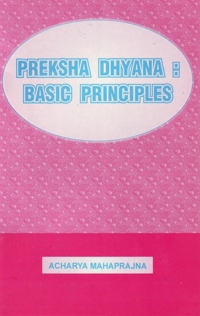Earlier it was stated that urges and impulses, passions and emotions are all endocrine expressions. There are forces more subtle than the physique. These forces are the primal drives emanating from the microbody (Karma-šaītra) which is intimately united with the psyche. The micro-vibrations of the primal drives first produce appropriate conditions in the neuro-endocrine system. The integrated action of this system produces hormones and neuro-hormones which not only generate feelings but also command appropriate action that satisfies the need of the urge. We either progress or retrogress depending on whether we control and subdue our primal drives or succumb to them. The process of subduing the forces of primal drives consists in generating vibrations or waves which countermand them by conscious reasoning. It is the authority of the spiritual self which commands the reasoning mind to produce the counter-vibrations. The vibrations of waves resulting from the primal drives are malevolent lešyãs whereas the counter-vibrations produced by the authority of the self are benevolent lešyãs. On the basis of their intensities both the above type of lešyãs are divided into three categories:
- The most intense of the malevolent class are Kṛṣṇa - dark black.
- The medium ones are Nīla—blue dark.
- The least intense ones are Kãpota—grey.
Similarly in the benevolent class,
- The least intense ones are Tejas—bright red.
- The medium ones are Padma—bright yellow.
- The most intense ones are Šukla—bright white.
When one is under the influence of the evil trinity of Kṛṣṇa, Nīla and Kãpota, the force of the instinctive drives is so powerful that the reasoning mind surrenders to it. On the other hand, with the conversion of lešyãs, the rational mind is able to countermand the insistence of the carnal desires.
It will be seen from the above that the nomenclature of the lešyãs has been made on the basis of the spectrum of dark and bright colours.
Colour is an inherent characteristic of the entire material existence. The nature of colour is electromagnetic radiation. Difference in wave-length and frequency distinguishes one colour from another. Lešyãs are also radiations and different lešyãs have different wavelengths, and therefore, each has a definite place in the electromagnetic spectrum. Each one, therefore, can be associated through its harmonics with a definite colour in the visible spectrum, i.e. from red to violet. Thus on the basis of the relation between the colours of the visible spectrum and the lešyã radiations, we can use specific colours as the means of strengthening or weakening the lešyã radiations.
The spiritual progress will depend upon the degree of transformation of the malevolent trinity into the benevolent one. Without actual transformation, there will be no process. This is not merely a speculation, but the basis of a real experience. And to bring about the desired transformation, perception of psychic colour—Lešyã-dhyãna has proved to be a practical means of transformation. Lešyã-dhyãna is thus an efficient tool of sucessively diminishing the intensities of the malevolent lešyã from Kṛṣṇa to Nīla and from Nīla to Kãpota, and then progressively increasing the intensities of the benevolent lešyã—from Tejas to Padma and from Padma to Šukla. The actual spiritual progress commences with the conversion of Kãpota to Tejas, i.e. from grey to red. The index of Tejas lešyã is bright red colour of sunrise. Colour psychology also supports the view that the bright red colour is the first indication of the spiritual progress.
With the above conversion, there is a remarkable drop in animal instincts and carnal desires and such other habits. Further progress will result from the change of Tejas lešyã to Padma lesya and the final change of Padma to Šukla lešyã will result in the total eradication of cruelty, hatred etc.
The Aura
It is now well-known that the body is constantly surrounded by an envelope of colours called "aura" which is an effect of lešyã. Change in lešyã will bring about a corresponding change in the colour of aura. That is why aura is predominated at different times by different colours such as black, red, yellow, blue or white.
Aura is not only influenced by the internal colour indices, but is also influenced by the colours of the external environment. That is why the cause and effect relation between lešyãs and colours is reciprocal. In other words, just as any change in lešyã would result in the change in the colour of aura, the change in the aura by the influence of the colours of the external environment would bring about a change in the lešyã. This principle has been utilized in the "perception of the psychic colours" (Lešyã-dhyãna) to transform the malevolent lešyãs into benevolent ones.
 Acharya Mahaprajna
Acharya Mahaprajna

